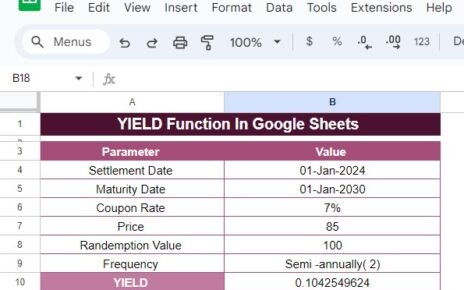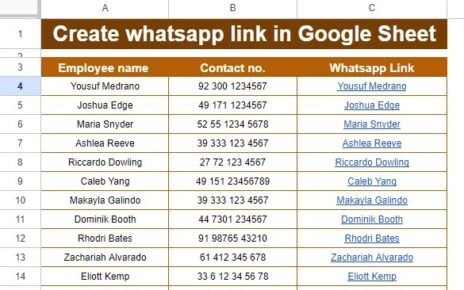Event planning requires meticulous attention to detail, from budgeting and scheduling to attendee satisfaction and logistics. To ensure every aspect of the event goes smoothly, event planners need to track various key performance indicators (KPIs). The Event Planning KPI Dashboard in Google Sheets is a powerful tool designed to help event managers monitor and optimize their event planning processes.
In this article, we will explore the Event Planning KPI Dashboard in Google Sheets, its features, and how it can help streamline event management by providing real-time insights into key event planning metrics.
What is the Event Planning KPI Dashboard in Google Sheets?
The Event Planning KPI Dashboard in Google Sheets is a ready-to-use template that allows event planners to track essential KPIs related to the planning and execution of events. From budget management and attendee satisfaction to scheduling and logistics, this dashboard provides a clear and comprehensive view of event performance.
The template consists of six main worksheets, each focused on a specific aspect of event planning. These sheets provide insights into different KPIs, enabling event planners to track performance and make informed decisions throughout the event planning process.
Key Features of the Event Planning KPI Dashboard in Google Sheets
This dashboard consists of six worksheets, each designed to monitor a different facet of event planning. Below are the key features of each sheet:
1. Dashboard Sheet Tab
The Dashboard Sheet serves as the central hub for monitoring all event KPIs. It provides a high-level view of your event’s performance with several important metrics and visual representations.
MTD (Month-to-Date) and YTD (Year-to-Date) Metrics:
- MTD Actual: Displays the actual data for the current month.
- MTD Target: Shows the target data for the current month.
- PY vs Actual: Compares the current month’s performance with the same period from the previous year (PY).
- YTD Actual: Cumulative actual data for the year.
- YTD Target vs Actual: Comparison of the YTD target with actual performance for the year.
- Conditional Formatting: Visual indicators (up/down arrows) show whether the performance is above or below the target and PY data.

Click to buy Event Planning KPI Dashboard in Google Sheets
2. KPI Trend Sheet Tab
The KPI Trend Sheet helps you track the performance of individual KPIs over time, providing valuable insights into long-term trends.
KPI Selection Dropdown:
In C3, you can select a KPI, and the sheet will display:
- KPI Group: The category of the KPI (e.g., budget, attendance, logistics).
- Unit of KPI: The unit of measurement for the KPI (e.g., dollars, percentage, number of attendees).
- Type of KPI: Whether the KPI is “Lower the Better” or “Upper the Better.”
- Formula of KPI: How each KPI is calculated.
- KPI Definition: A clear description of what each KPI measures and its relevance to event planning.

Click to buy Event Planning KPI Dashboard in Google Sheets
3. Actual Number Sheet Tab
The Actual Number Sheet is where you input the actual data for MTD and YTD. This data is automatically reflected in the dashboard.
-
Monthly Data Entry:
Enter the actual data for each KPI for the selected month (indicated in E1), and the dashboard will update with the new performance metrics.

4. Target Sheet Tab
The Target Sheet allows you to enter your target data for each KPI, both MTD and YTD. These targets are used to evaluate your event planning performance.
-
Target Data Entry:
Enter your target values for each KPI, and compare them to actual performance on the dashboard.

Click to buy Event Planning KPI Dashboard in Google Sheets
5. Previous Year Number Sheet Tab
The Previous Year Number Sheet stores the data from the previous year, allowing you to compare current performance with historical data.
-
Previous Year Data Entry:
Enter last year’s data for each KPI to assess progress and growth over time.

6. KPI Definition Sheet Tab
The KPI Definition Sheet provides definitions for each KPI, ensuring everyone understands what each metric tracks.
-
KPI Definitions:
Each KPI is defined by its name, group, unit, formula, and an explanation of what it measures and how it contributes to event planning performance.

Advantages of Using the Event Planning KPI Dashboard
-
Comprehensive Monitoring: Track all key metrics for your events, from budget and ticket sales to attendee satisfaction and vendor performance, all in one place.
-
Real-Time Insights: The dashboard automatically updates as you input new data, providing up-to-date insights into event performance.
-
Customizable for Your Needs: The template is customizable, allowing you to adjust KPIs, add new ones, and modify the layout to suit your specific event planning needs.
-
Visual Data Representation: The charts, graphs, and conditional formatting offer clear visual feedback, helping you easily track progress and identify areas that need improvement.
-
Data-Driven Decision Making: By tracking important KPIs, the dashboard helps you make data-driven decisions to improve the success of future events.
Best Practices for Using the Event Planning KPI Dashboard
-
Update Data Regularly: Ensure that data is entered consistently so the dashboard accurately reflects the latest performance metrics.
-
Focus on Key KPIs: Regularly monitor KPIs like Attendee Satisfaction, Ticket Sales Revenue, and Budget Adherence to ensure your events are successful.
-
Leverage Trends to Improve Future Events: Use the KPI Trend Sheet to track long-term trends in your events and adjust strategies for continuous improvement.
-
Collaborate with Teams: Use the dashboard to collaborate with different teams, including marketing, vendors, and sponsors, by sharing insights and tracking joint KPIs.
Frequently Asked Questions (FAQs)
Click to buy Event Planning KPI Dashboard in Google Sheets
1. How do I update the Event Planning KPI Dashboard?
Simply enter the latest data for each KPI in the Actual Number Sheet, and the dashboard will automatically update.
2. Can I track multiple events with this dashboard?
Yes, you can customize the dashboard to track multiple events by adding new sections or columns to the KPI Trend Sheet and Dashboard Sheet.
3. How do I compare performance with previous years?
Enter last year’s data in the Previous Year Number Sheet to compare it with the current year’s performance.
Conclusion
The Event Planning KPI Dashboard in Google Sheets is a powerful tool for monitoring and optimizing event management. With real-time tracking of key performance metrics like revenue, attendance, satisfaction rates, and vendor performance, this dashboard provides event planners with the data they need to ensure the success of their events. Whether you’re organizing a small conference or a large-scale event, this dashboard will help you stay organized and make data-driven decisions to improve outcomes.
Visit our YouTube channel to learn step-by-step video tutorials
Youtube.com/@NeotechNavigators



